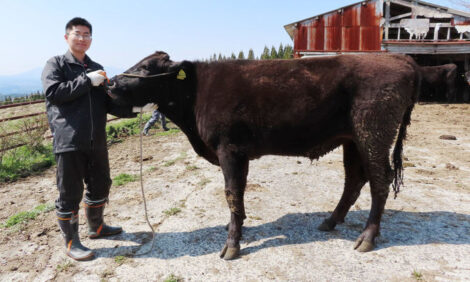



Little Change in UK Antibiotic Use in Animals
UK - The latest report on antibiotic sales for animals, based on data from 2012, indicated no significant changes in the use of these medications from the previous years - including critically important antibiotics for human use and anticoccidials for poultry. For the first time, sales of intramammary antibiotics for dairy cows are included in the report and figures are reported in Population Correction Units (as used in the EU).The UK's Veterinary Medicines Directorate (VMD) has published the 15th in its series, 'UK Veterinary Antibiotic Resistance and Sales Surveillance' for 2012.
The reports are designed to provide information about the sales of veterinary antimicrobial products in the UK. The data for this report have been calculated using the same methods developed and used since 2002.
Summary of the main points and changes to the report (all weights of antimicrobial products are expressed as tonnes of active ingredient (a.i) unless otherwise stated)
The main points and changes presented in this year’s report are:
Total sales of active ingredient, (mg), sold for food-producing animals per population correction unit (PCU) have been included for the first time in this report. The PCU is the unit of measure used in the EU to compare sales as related to animal populations and demographics. This figure was 55mg per PCU for 2012, lower than but differing little from the five year mean of 59mg per PCU.
For critically important antibiotics (for human use), the PCU figures for 2012 are 6.3mg for macrolides, 0.35mg for fluoroquinolones and 0.2mg for 3rd/4th generation cephalosporins. These figures have remained fairly stable over the five-year period.
In 2012, 60g of active ingredient was sold for each tonne of live weight animal slaughtered, which is in line with previous years.
For the first time in this report sales of intramammary antibiotics per dairy cow in the national herd have been reported. In 2012, this equated to 2g of active ingredient per dairy cow. This figure ranges from 1.7g to 2.1g during 2008-2012.
Total sales have varied little over a 'normalised' five-year period (2006-9 and 2012), with variation of 6 per cent between highest and lowest sales years. Sales for 2012 were 3 per cent higher than the 2006-12 seven year mean. The 'normalised' five-year period is shown because of atypically high and low sales figures for 2010 and 2011 respectively.
In 2012, 86 per cent of antibiotics active in products authorised only for food-producing animals were for use in a combination of pigs and poultry.
In 2012, 349kg more fluoroquinolone antibiotics were sold than in 2011. This equates to the same percentage in total sales in 2011 and 2012 (0.6 per cent).
Sales of 3rd and 4th generation cephalosporins increased in 2012 by 162kg. This equates to the same percentage in total sales in 2011 and 2012 (0.3 per cent).
With respect to administration type, medicated feedingstuff for food-producing animals accounted for 60 per cent of veterinary antibiotic products sold, most of which are sold for use in pig and poultry farming.
Sales of coccidiostats in 2012 totalled 301 tonnes, an increase of 24 tonnes from 2011.
Antifungal sales, at 6.2 tonnes, were the second lowest for the five-year period 2008-12.
Sales of antibiotics in 2012 for veterinary medicinal products authorised only for use in non-food-producing animals accounted for 35 tonnes, (nine per cent), of the total annual sales of 409 tonnes.
Sales have remained mostly static over the five-year period 2008-12.
It is currently impossible to determine what proportion of the 24 tonnes, (six per cent), of antibiotics sold for use in either food-producing or non-food-producing animals was used in companion animals.
No sales of antimicrobial growth promoters are reported as their use and sale were banned from 1 January 2006.



